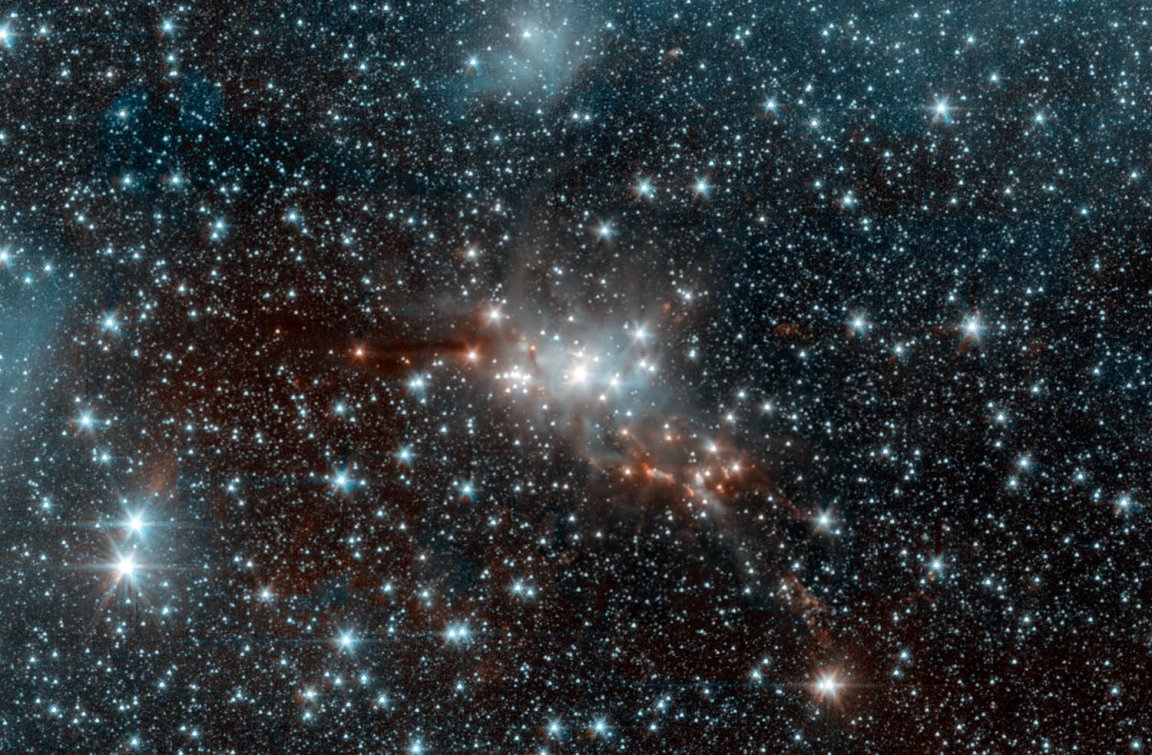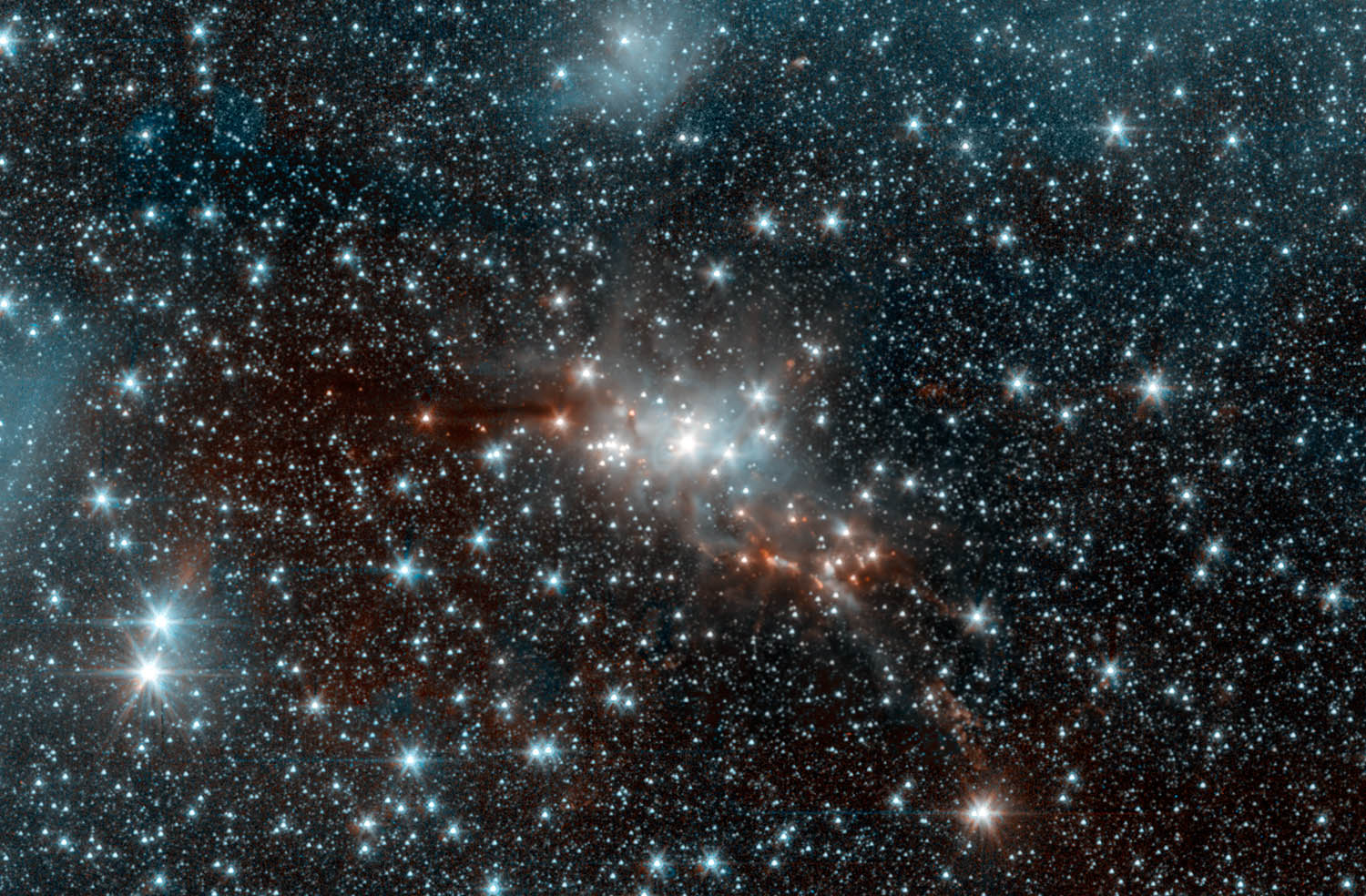

Earlier this year, Spitzer captured this image of one of the youngest groupings of stars in the Milky Way. Called the Serpens Cloud Core, these stars lurk about 750 light-years from Earth in the Serpens constellation.
In addition to being young, the stars in the Serpens Cloud Core are also, generally speaking, low-mass, which means they lack the bells and whistles more famous star forming regions, like the Orion and Taurus Molecular Clouds, are known for. Instead of bright, blue-white stars, that grow to be immensely large and are short-lived, these stars generally hang between our Sun and red dwarfs in size.
They still yield valuable clues into stellar evolution, especially the first stages that proceed the formation of a new star. Specifically, the stars in question are in the very first stage of development, and in this image, they are represented by different colors: orange, red, and yellow.
According to NASA:
Other red features include jets of material ejected from these young stars. Some mature stars that are not in the nebula appear yellowish due to dust obscuring our view at shorter, bluer wavelengths.
This region also includes a population of prenatal stars that are so deeply enshrouded in their dusty cocoons to be completely hidden in this view. They only become detectable at much longer wavelengths of light.
The inner Serpens Cloud Core is remarkably detailed in this image, as it was assembled from 82 separate snapshots totaling a whopping 16.2 hours of Spitzer observing time. Serpens is one of several star-forming regions targeted by the Young Stellar Object Variability (YSOVAR) project, which conducted repeated observations in each area to look for changes in brightness in the baby stars. Such fluctuations can provide valuable clues to how stars gobble up gas and dust as they grow and mature.
The image itself was taken during Spitzer’s “warm mission” phase, which began in May of 2009, after the revolutionary infrared observatory consumed the remainder of its liquid coolant supply. (See a larger image here)